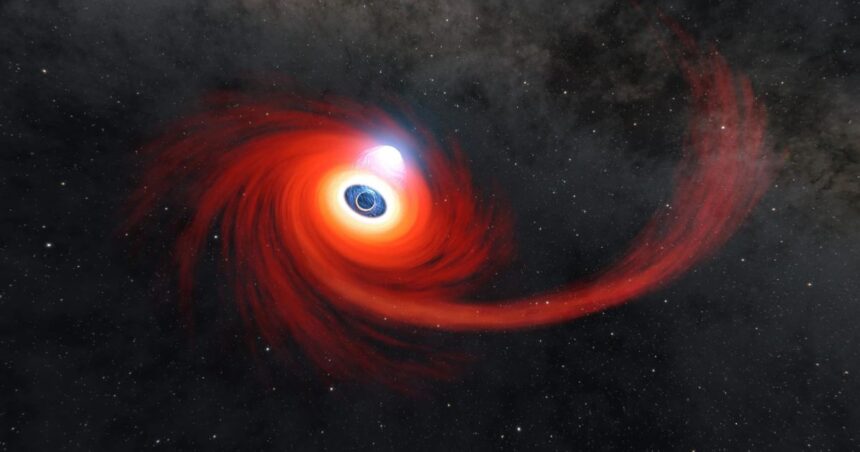Astronomers using the James Webb Space Telescope (JWST) made a groundbreaking discovery. They found an ancient supermassive black hole blowing a powerful wind that is capable of stripping gas and dust from its host galaxy, effectively killing star formation. This discovery is significant as it provides insights into the early universe and the role of supermassive black holes in galaxy evolution.
The supermassive black hole, located in a quasar known as J1007+2115, is so distant that it is seen as it was just 700 million years after the Big Bang. The wind it is producing is the earliest known galaxy-scale wind, pushing material away at incredible speeds. This wind is powerful enough to halt star formation in its host galaxy, making it a galaxy-killer.
The James Webb Space Telescope, launched in December 2021, has been instrumental in this discovery. Its advanced capabilities allow astronomers to observe distant objects with unprecedented clarity and detail. The discovery of this supermassive black hole and its galaxy-killing wind is a testament to the power of the JWST and its ability to uncover secrets of the early universe.
Supermassive black holes are found at the centers of most galaxies, including our own Milky Way. They are millions to billions of times more massive than the sun and have a profound impact on their host galaxies. The wind produced by these black holes can regulate star formation by removing the gas and dust needed to form new stars. This process, known as feedback, is crucial in understanding how galaxies evolve over time.
The discovery of the galaxy-killing wind from the ancient supermassive black hole provides valuable information about the early universe. It suggests that supermassive black holes have been shaping galaxies from the very beginning. This finding challenges previous theories about galaxy formation and evolution, indicating that black holes play a more significant role than previously thought.
Astronomers are excited about the implications of this discovery. It opens up new avenues for research and helps refine our understanding of the universe’s history. The James Webb Space Telescope will continue to explore distant objects and uncover more secrets of the cosmos.




